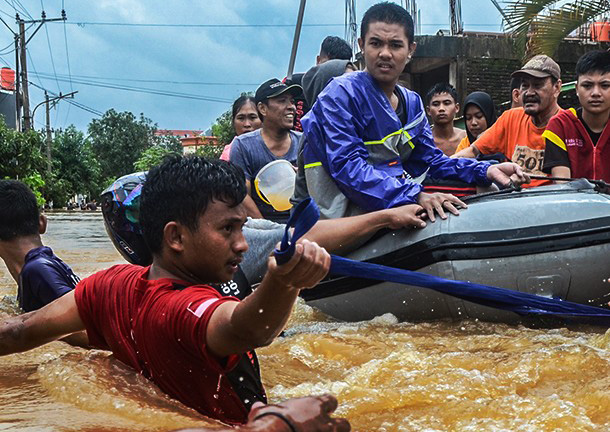Below is a brief overview of how we apply our research findings to different campaigns and projects.
CLIMATE ENGAGEMENT
While most people now know that climate change exists, only a few change their consumption or political behavior accordingly. If we want to keep global temperature rise below 1.5 degrees, citizens around the world will need to accept legislation that will impact their lifestyle. Creating a culture or societal mindset that approves such changes will be needed to, give the social license required for leaders to act, and to avoid giving power to populists who deny climate change, and waste precious time.
Decades of research conducted by scholars around the world show that people react to climate change information in different ways. Some people are ignorant of the relevance of it as their own lives are distanced in time and space. Others relate to the problem but find reasons to justify not acting. Another segment of the population worry about – or are even scared of – how the future might turn out. Some of them fall into depression or try to save themselves, while others go into denial as a coping mechanism. Therefore, communication needs to be adjusted according to how people think and feel so that we can effectively engage with them.
Do you know how your audience segments think and feel about climate change? Would you know the best ways to challenge ignorance? And how different that is to challenging denial? If you want to segment your audience based on their climate change perception and develop tailor-made emotional engagement strategies for them, then Mindworks can help you.
AUDIENCE UNDERSTANDING AND ENGAGEMENT
Audience-centric campaigning is at the centre of our engagement strategy. Over the past years, Greenpeace has developed multiple ways to research and segment audiences (more information on the traditional ways of audience research can be found here).
But what if a person, who engages with an issue, is not primarily driven by their values or the interpretation of the problem, but by the emotions that the issue evokes in her? Is a person ignoring climate change, or is she afraid of it? Does fear paralyze her, or is she in denial? Figuring out the right engagement tactics for a person will strongly depend on their psychological fabric. These emotional fabrics are unique to a person or a group of people, but not issue-specific, so the findings can be applied to areas such as climate, forest, meat consumption, oceans, transportation, etc.
Can we research this fabric? Can we create emotional personas? Can we segment these personas using Facebook? We have some answers to these questions that can be used to design – both online and offline – experiments to develop new ways of psychological segmentation and take an emotional audience-centric approach.
COGNITIVE EXPERIMENTS
We are excited to test the information we have gathered from our cognitive research to see how it can improve the impact of our campaigns. Already we have applied our research about defining moments to brand audits to determine whether these interactions can change people’s attitudes about material consumption. And as part of the Meat and Dairy campaign, we are discussing how we can test the ideas of nudging and dynamic norm messaging in cafes, to see if we can influence people to reduce their meat consumption. (Please contact us at [email protected] for more information about both of these experiments).
As we connect more and more with different departments and NROs about their campaigns and projects, more opportunities arise for experimentation. Experimenting is important if we want to build on our existing knowledge and increase the impact of our campaign, engagement and fundraising projects. We welcome people that want to work with us to do that!
Below are examples of tools we currently investigating that could prove helpful for campaigns.
CHATBOTS
Chatbots are computer programs that aim to simulate interaction with a human, usually through a conversation via text messaging (more information can be found here). Chatbots present an interesting way to tackle one of our challenges, which is building our interaction with a person on an understanding of her personal needs. We have started doing this through our offline engagement activities, but it is difficult to do at a scale level. Chatbots offer a way to do this since conversations can occur at a rate thousands of times more compared to what we can manage using our engagement teams. What’s more, because of the information we can gather from these conversations, we are able to test how best we can convince people and we can learn lots about our audiences that we can use in our campaigns. We are currently working on creating opportunities to test a chatbot that can converse with people in a way that motivates them to engage in sustainable behaviours relating to eating, transport and energy use.
COMMUNICATION VIDEOS
In a world where people are constantly bombarded by information and we’re all now participating in the ‘attention economy‘, effective communication can be challenging. This is especially true if we want to go beyond just attracting people’s attention and influence how they think, feel and behave. So how can we improve the impact of our YouTube and Facebook videos so that our audiences are not only entertained but are influenced by the content? One of our objectives this year is to start experimenting with designs based on psychological insights, to see how we can increase the impact of our communication videos.
MEASUREMENT TOOLS
Measurement is an integral part of the learning process; how can we know if our new ways of working are effective if we don’t measure it? But behavior and mindset change cannot be measured by media coverage or online clicks, which is why we’re developing new tools that can monitor and evaluate success.
Choosing the right tool is important and they should build on the baselines that we have created in our audience. We help teams select the most appropriate and effective tool to use to understand their audience and to measure whether they’re successfully influencing them. We also help to hire and brief the right agencies, support teams in designing experiments, and support the analysis of the data. How comprehensive and in-depth these processes are, will depend on budget and resources.



